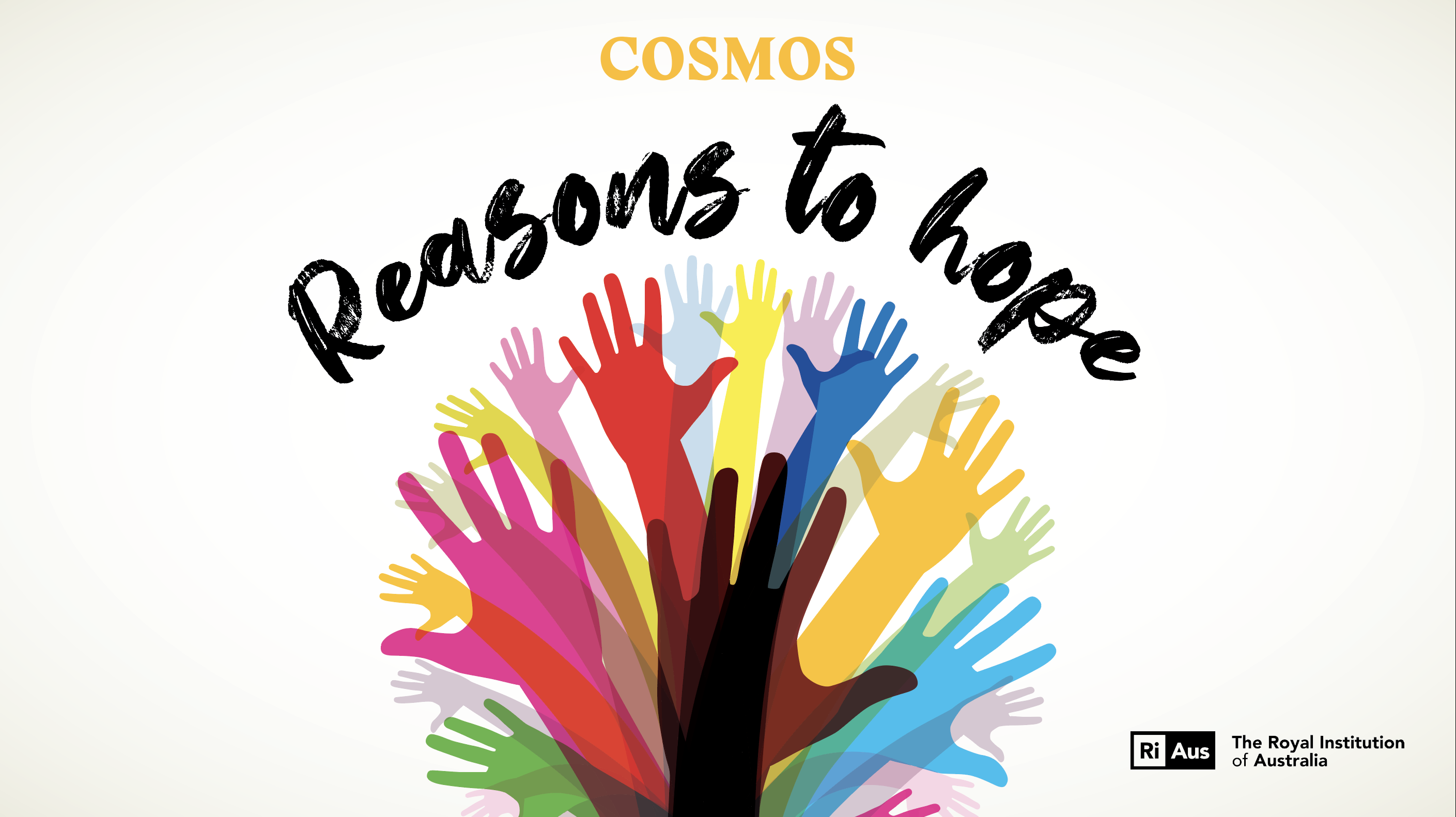I’m hovering 10 metres above the surface of Mars, piloting Ingenuity – a tissue-box-sized helicopter – as it skitters and soars overs the rippled surface of Jezero Crater. Delicately engineered carbon fibre blades gently whir, barely audible against my imposing orchestral soundtrack.
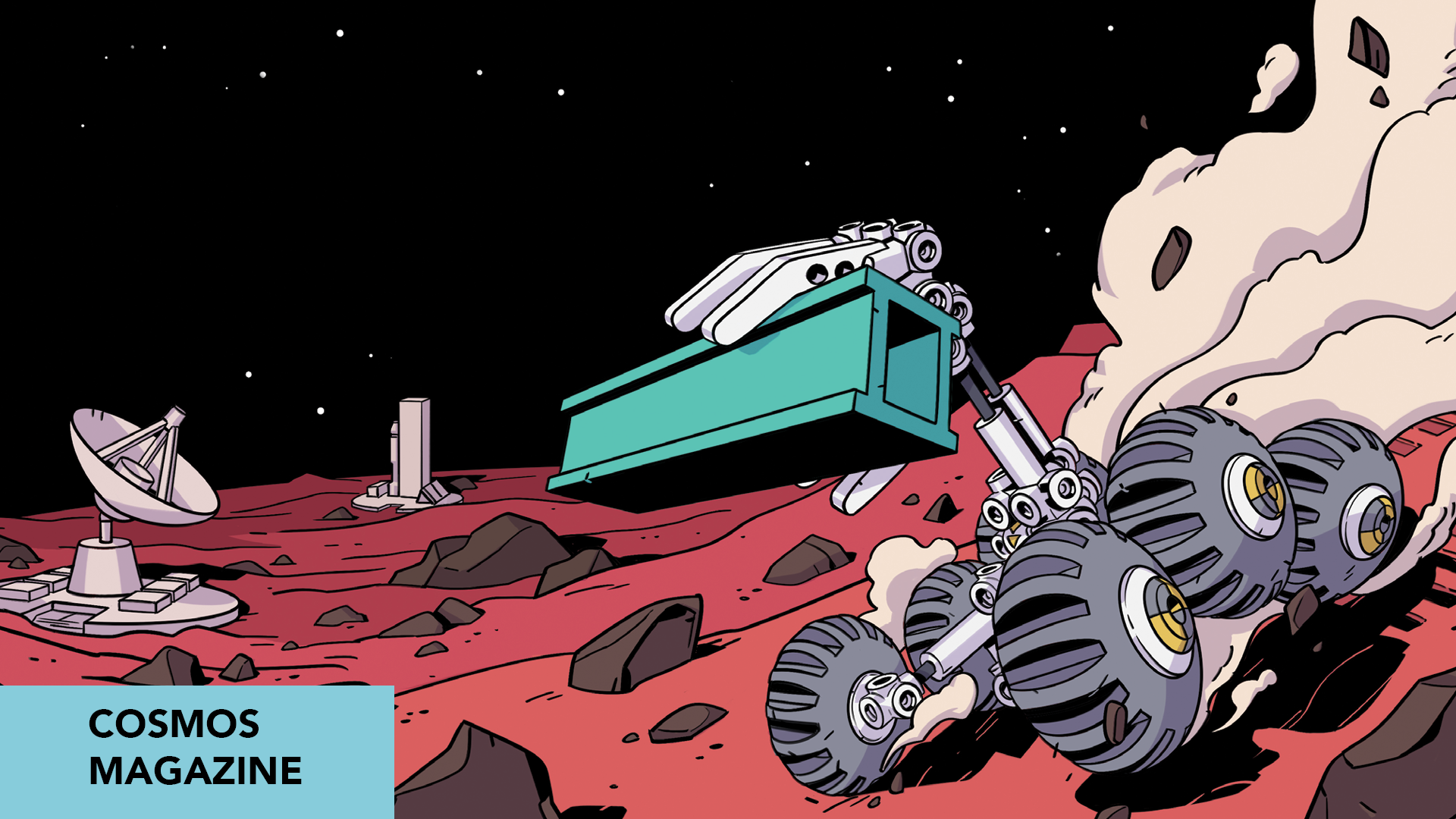
I’m not wearing a spacesuit, more than 90 million kilometres from Earth. Instead, I’m wedged in the study nook of a terrace house in Melbourne, where the most uncomfortable part of my outfit is the virtual reality headset that’s plugged into a laptop. But as I guide the tiny spacecraft, alone in the expansive, unearthly vista of Mars, I feel a long way from home.
The 3D path to Martian learning
By the time Perseverance’s carefully packed drone-copter, Ingenuity, took its first flight on 19 April 2021, gamers had been exploring the Martian surface for months. Mars Flight VR, a flight simulator by Melbourne video game developer Conor O’Kane, allows players to use the small, solar-powered helicopter to explore the neighbourhood of Jezero Crater, landing site for the rover, Perseverance.
With controller in hand, players steer the ruler-length helicopter, nicknamed Ginny, over the planet’s landscape, sometimes completing science missions, including taking photographs of selected sites.
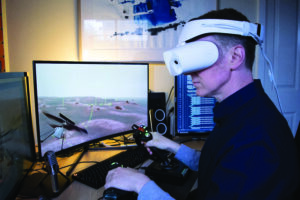
Experiencing Mars in virtual reality eclipses two-dimensional video or photos, says O’Kane. Immersed in 3D, players can better appreciate the planet’s topology, gaining a sense of distance and scale.
“You can see, oh, we’re going to land here,” O’Kane says. “And it’s only a couple of hundred metres to the hills. You can see how high the hills are. “My hope is that people will start to think, ‘why are there hills like this on Mars?’ And then they’ll read a bit about it. And they’ll learn, actually these hills are not just hills, they’re a river delta deposited by a river flowing for millions of years.”
Video games might seem an escapist distraction, but O’Kane thinks they have huge potential as a vehicle for science advocacy. By presenting people with a simulator that makes Mars seem real, he believes a new generation will be inspired to learn more about science and planetary exploration.
They’re grand aims to grow from what started as a quirky hobby. Six years ago, O’Kane began home-making sections of the Martian landscape. Starting with digital terrain data from the High Resolution Imaging Science Experiment – HiRISE – he used a home 3D printer to replicate slices of Martian landscape in 1:20,000 scale before painting them in colourful acrylics.
“So I had been getting into this … then I thought I could take the landing site for this new mission, Perseverance … and fly around it in VR before the helicopter even gets there.”
Professionally, O’Kane has worked as a video games developer and technical artist for more than two decades. Relying on his knowledge of programming and 3D printing, he imported the Mars terrain data into the Unity video game engine and began to bring it to life in virtual reality.
Aiming for accuracy, in 2018 he toted a VR headset, laptop and game demo to the Mars Society Convention in Los Angeles with funding assistance from Film Victoria. There, he met people from NASA – even some working on the Perseverance mission – and other engineers interested in space flight, who provided feedback on details like the atmospheric density on Mars, and the properties of the helicopter.
“Of course, the real helicopter flies itself, you don’t directly control it, you just give it a destination and it flies. But that’s no fun in video games,” O’Kane says. “So, I tried to make it feel as much like flying on Mars as I can while still being accessible.”
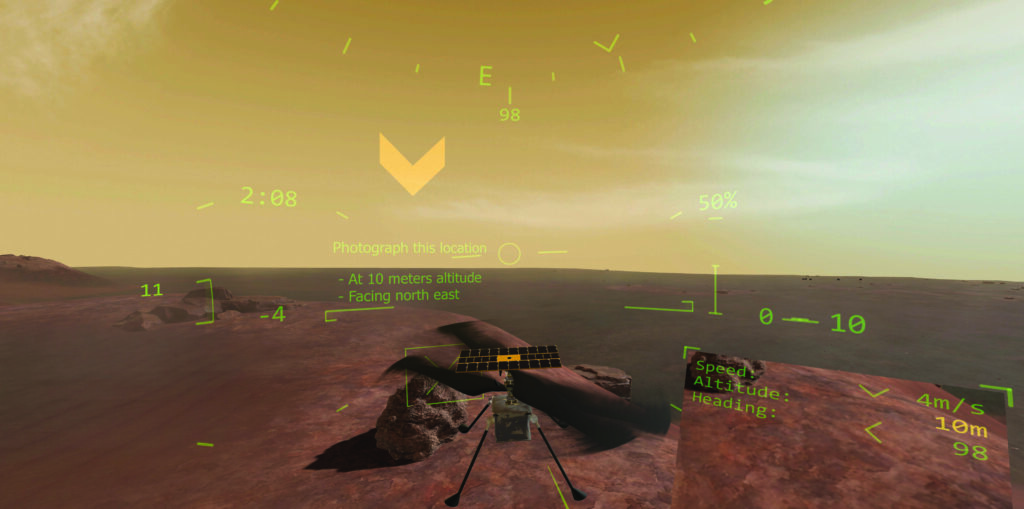
Mars Flight VR includes missions in which the player has to capture photographs of nearby rocks in a short time. This tests the player’s ability to fly quickly, and also to perform a stable hover to capture the image from the correct angle. Mars Flight VR started out as a quirky pastime for developer Conor O’Kane. Using image files sourced from the Mars Reconnaissance Orbiter’s HiRISE camera, he’d make and colour 3D printed models of Martian landscapes.
LPL: open access lab
Known for its deserts and canyons, the US state of Arizona is home to a research lab which has been photographing the Red Planet in high resolution detail since 2006.
The University of Arizona’s Lunar and Planetary Laboratory (LPL) operates HiRISE, the powerful camera onboard the Mars Reconnaissance Orbiter.
So far, HiRISE has captured around 4% of the Mars surface. Images of the planet are acquired from orbit by a powerful camera, relayed through deep space networks and then processed by LPL into digital topography models of the Martian landscape.

The images and data play an important scientific role, helping to reveal the planet’s environmental history and its geological processes. One research project used the data to look at how carbon dioxide sublimates, changing phase between ice and vapour, and is the driving force behind erosion and change on the planet.
HiRISE research scientist Dr Matthew Chojnacki says, “a lot of the gully activity for example, is largely, we think, driven by carbon dioxide processes, its phase change … How it occurs and travels from one side of the planet to the other, and accumulates in these darker, colder local regions.”
Yet, far from being exclusive or out-of-reach, HiRISE is “the people’s camera”.
LPL’s commitment to public outreach sees Mars images and data released on a monthly basis; much faster than other NASA programs.
“We release new data as soon as we can get it calibrated and processed,” says Dr Sarah Sutton, a photogrammetry and image processing scientist with the HiRISE Operations Center.
“We’re always thrilled when the public engages with the data.”
Engagement is so intrinsic to LPL’s approach that members of the public can even nominate locations on Mars to be photographed, using a tool called HiWISH.
“It’s easy, and it’s fun,” says Sutton. “And it’s very exciting when your target gets acquired.”
While there’s no guarantees a publicly requested site will be captured, many are. In fact, Sutton says it was a request through HiWISH that confirmed the final landing site of UK’s Beagle 2 Mars Lander, which was due to land on 25 December 2003, but declared lost after an extensive search.
“It did actually land,” she says. “It was thought that it crashed. But they found it because they could actually see it in our images, and nobody had looked.
“From the analysis of our HiRISE images, they were able to determine then that the Beagle had landed and that some of its panels had opened, but not fully. And so, it was never able to communicate back.” LPL’s website, called ‘Made with HiRISE’ showcases the broad range of artistic and technological interpretations of Mars data and images; everything from visual arts, to music, school projects, animations, apps and augmented reality.
LPL has even produced tools allowing its digital terrain models to be exported for uses like 3D printing, and actively encourages creative exploration of its data and images, by artists, designers … and video games developers.
It’s a way of reimagining real Mars, evoking an outer space sensory experience rendered through virtual colour, texture, depth and sound.
Rovers In real life
Rover planning on the Red Planet can seem a bit like a video game sometimes, says NASA program scientist Dr Mitch Schulte.
Schulte is based in Washington, DC and oversees the science goals of Mars missions – like those involving Perseverance and Ingenuity. His role includes assessing research proposals to access NASA’s vast public archive, called the planetary data system.
A rover like Perseverance can’t be controlled in real time, he says. Mars is simply too far away, so everything needs to be planned in advance.
That’s why, Schulte says, “coding is everything”.
“The amount of debugging that goes into the software ahead of time is enormous, because we can’t afford any mistakes. And now when we want to tell the rover even just to drive 20 metres over to that rock, that is pre-programmed. That command is sent from Earth, directly to the rover, to its antenna. And then it performs those functions based on the software and the rover computing elements that are onboard.”
More recently they’ve added an ‘auto navigation’ capability. It’s programming that enables the rover to use its cameras to avoid major obstacles, like cliffs and sand dunes, which it encounters along its route. In fact, you can do this too: NASA’s website includes a simple game that lets you code commands to complete Ingenuity missions, though – sadly – not for real.
Schulte might be “knee deep in the science” of Mars exploration, but he says public engagement is an important part of NASA’s mission. Being government funded, the space agency is keen to ensure the public comes along for the ride.
“We want to make sure they understand what we’re doing, and why we’re doing it. What they’re getting out of it, what the scientific community gets out of it,” he says.
Schulte believes that sparking an interest in the science of Mars – even tangentially through a video game – is definitely worth it. He sees an interplay between exploring Mars through a medium like art or video games, and growing awareness about the science, technology and engineering aspects of the actual missions.
Playing a game set on Mars might lead people to question, ‘Oh, what’s it like outside on Mars?’, he says. “And then of course, that leads them to us.”
Special delivery: on mars
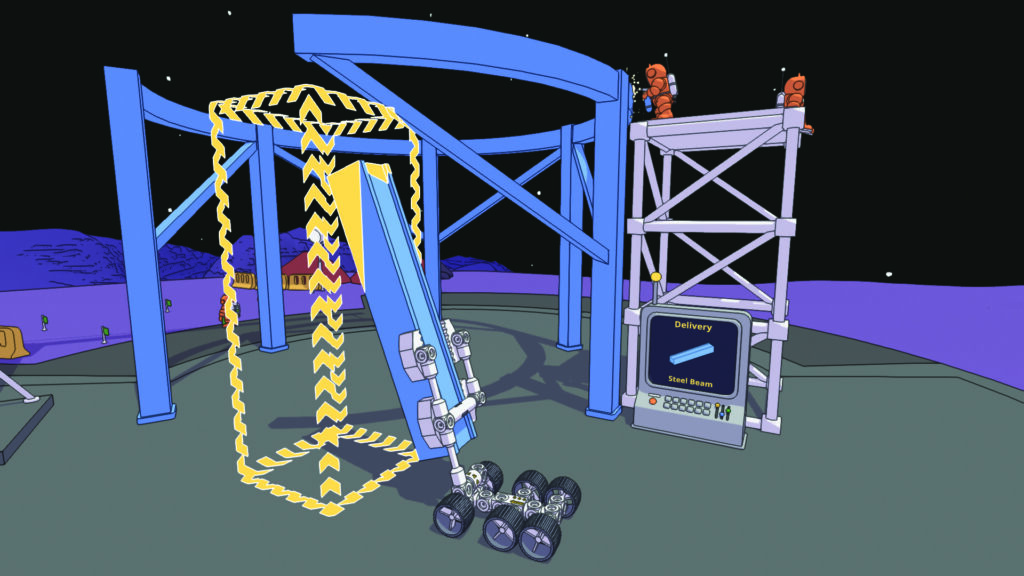
I’m back on Mars again, but this time the landscape looks different. Here, like a 1950s cartoon drawn in ligne claire, the saturated reds and purples of the planetary surface are contained within clear black outlines. An upbeat, electronic soundtrack sets me buzzing as I snap together parts – a connector, servo and claw – to customise my Mars rover.
Levering the vehicle’s new and awkwardly constructed arm under an upturned crate, I hoist it off the ground and set off towards the greenhouse, tyres crunching regolith and kicking up Martian dust.
Contract complete!
Engineering puzzle game Mars First Logistics is due for release in early 2023, with a demo available on the Steam platform.
In a more artistic than authentic aesthetic, players in this game complete delivery contracts, providing logistics support for the construction of a Mars colony (a goal private company SpaceX aims to achieve by 2050). It’s Mars, Jim, but not as we know it.
“I wanted to make it so it feels like you’re playing with Lego, like you’re playing with a toy,” says developer Ian MacLarty, who created the game with his team at Shape Shop. “But it’s still trying to bring out that engineering kind of ingenuity.”
Pieces can be deployed flexibly in interesting and surprising ways, both mechanically and aesthetically. “So for example, I’ve got a thing called the hydraulic cylinder, which gives you linear motion,” MacLarty says. “And then I’ve got a servo, which gives you rotational motion. And just those two things combined, you can do so much.”
The game manages to bring a touch of the everyday to the far, far away. While some delivery missions might involve construction materials – a steel beam or a telescope mirror – for building a greenhouse or an observatory, in others, players find themselves delivering lunch to the working astronauts.
It’s the kind of make-believe that makes the possibility of Mars tangible, even domestic – the household to-do list of humans 2.0.
Virtual reality gets real
After years in development, Mars Flight VR was released for early access in June 2020 as a second wave of the COVID-19 pandemic locked down O’Kane’s home in Melbourne, Victoria. A month later, NASA’s Perseverance rover was launched.
O’Kane, who now works as a simulation engineer at space tech company Saber Astronautics, was glued to the mission – watching NASA’s livestream and updates by the Mars Guy (aka Mars geologist Dr Steve Ruff) on YouTube. When the rover landed on 18 February 2021, it came as a huge relief.
“And then amazingly enough, the helicopter, which they expected to fly for like six minutes and then break, is still going 18 months later.”
Now the Martian landscape is taking on new, human, dimensions.
The helicopter has clocked up more than 30 flights, covering more than 7.3 kilometres, taking hundreds of photos of the Martian surface, according to NASA. O’Kane’s simulator has been downloaded more than 10,000 times.
“I’ve been flying around this for a couple of years, getting to know the area, getting to know the hills. And as the rover team drive to different locations, they name it,” he says. “There’s this particular outcrop, kind of a butte, or a hill. They’ve called it the Kodiak outcrop. I used to fly around that.”
Scientist, science-fiction author and space enthusiast, Arthur C Clarke wrote that “the astronomical artist will always be far ahead of the explorer. They can depict scenes that no human eye will ever see, because of their danger, or their remoteness in time and space”.
Just as books, art and film brought the Moon landing to life long before 1969; today video games and virtual reality offer the chance to play, fly and deliver things on the Red Planet, decades before crewed missions take flight, but as space agencies explore the planet with cameras, rovers and drone-copters, searching out signs of life and preparing for the possibility of human exploration before 2050.
One of Earth’s first Martian colonists could be skittering and soaring Ingenuity above Jezero Crater, right here, right now, in a bedroom not far from you. Their virtual reality, not knowing that it’s becoming real.
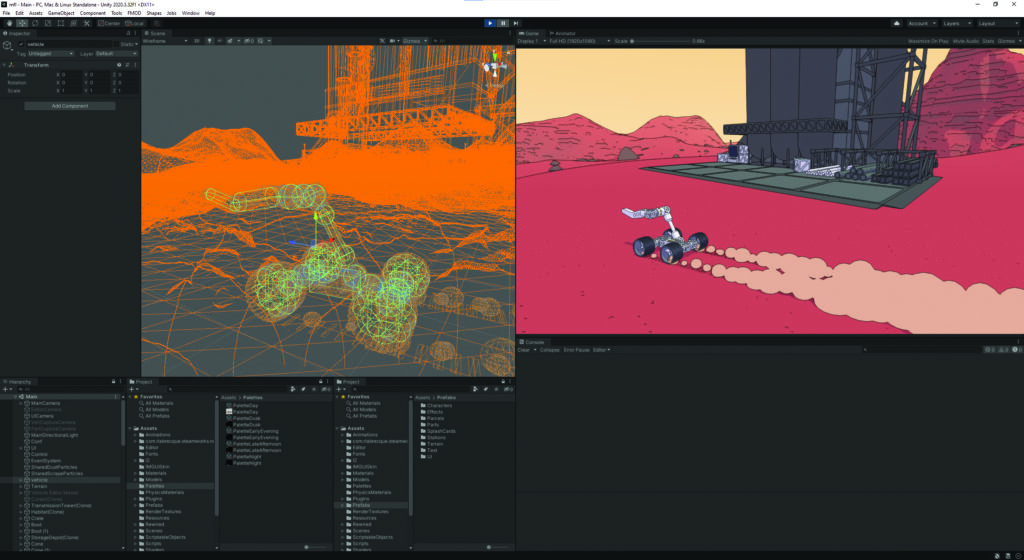
This article was written for Cosmos Magazine Issue 97.
PETRA STOCK is based in Melbourne. Last issue, she interviewed David Popa for the gallery: Here today…
Cosmos magazine is Australia’s only dedicated print science publication. Subscribe here to get your quarterly fill of the best Science of Everything, from the chemistry of fireworks to cutting-edge Australian innovation.
Login or Sign up for FREE to download the educational resources



